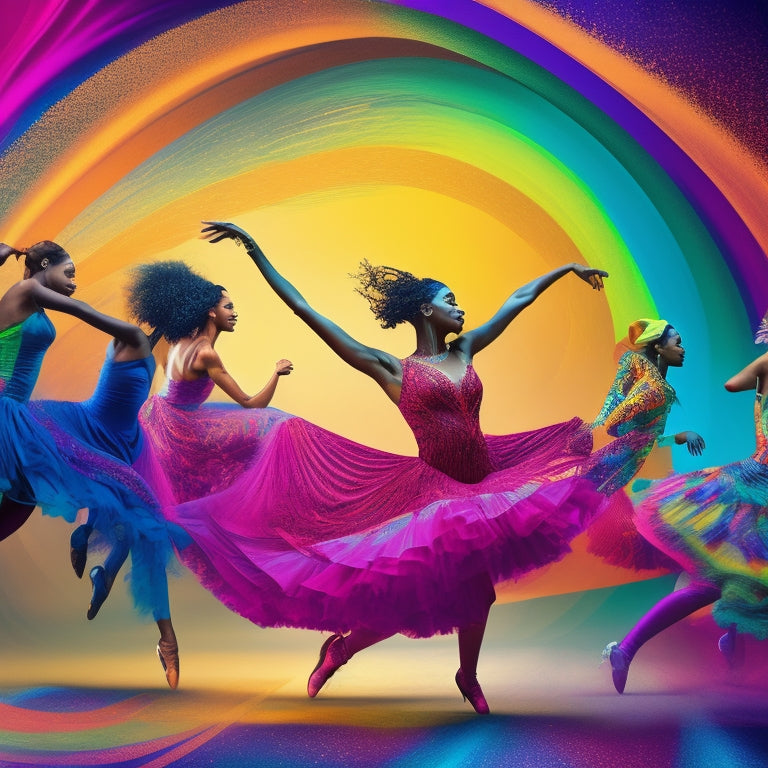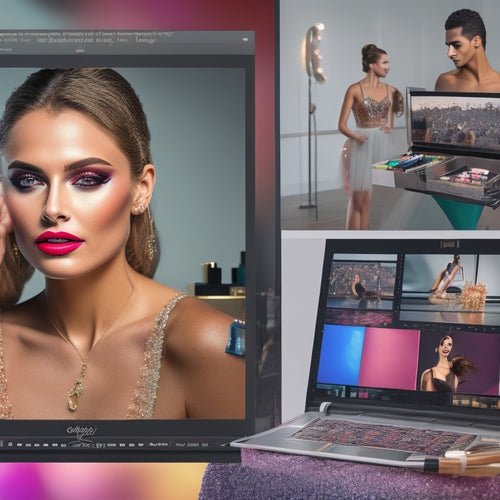
Diverse Dance Insights: Modern, Training, Resources, Innovations
Share
Diverse dance insights encompass a holistic approach to dance education, incorporating modern dance evolution, innovative training methods, and access to cutting-edge resources that foster artistic expression, technical proficiency, and creative choreography. A balanced training program exposes students to diverse styles, promoting adaptability and versatility. Developmentally appropriate classes guarantee students progress at their own pace, balancing technical training with artistic expression. The evolution of modern dance has been shaped by influential choreographers, blurring lines between dance, theater, and visual arts. As we explore the intersection of modern dance, training, and resources, we uncover the complexities of this dynamic art form, and discover the possibilities that emerge from this synergy.
Key Takeaways
• A balanced training program incorporating diverse styles fosters adaptability, versatility, and exposes students to various dance forms, leading to an engaging learning experience.
• Modern dance evolution, shaped by influential choreographers, blurs lines between dance, theater, and visual arts, allowing dancers to express themselves freely.
• Developmentally appropriate classes provide a foundation for well-rounded dance education, balancing technical training with artistic expression and creativity.
• Resources for dance excellence, including innovative technology, facilitate a holistic approach to dance training, encompassing technical proficiency and artistic expression.
• Innovative choreographers, such as Martha Graham, Merce Cunningham, Alvin Ailey, and Pina Bausch, have made significant contributions to modern dance, introducing new techniques and art forms.
Dance Education Essentials
In dance education, a thorough understanding of developmentally appropriate classes is crucial, as it lays the foundation for a well-rounded dance education that balances technical training with artistic expression. This approach allows students to explore their creativity while developing fundamental skills.
A balanced training program incorporates diverse styles, fostering adaptability and versatility. By exposing students to various dance forms, they can discover their strengths and interests, leading to a more engaging and fulfilling learning experience.
Furthermore, developmentally appropriate classes guarantee that students progress at a best-suited pace, reducing the risk of injury and promoting a lifelong appreciation for dance. By embracing this holistic approach, dance educators can empower students to become confident, expressive, and technically proficient dancers.
Modern Dance Evolution
Emerging as a reaction against the rigid techniques of classical ballet, modern dance has undergone notable transformations since its inception, shaped by pioneering choreographers and their innovative approaches. Influential choreographers like Martha Graham, Merce Cunningham, and Alvin Ailey have played an essential role in shaping modern dance techniques. Their innovative approaches have led to the evolution of movements and art forms, blurring the lines between dance, theater, and visual arts.
| Choreographer | Contribution | Technique |
|---|---|---|
| Martha Graham | Emphasized emotional expression | Contractions and releases |
| Merce Cunningham | Introduced chance procedures | Unpredictable movements |
| Alvin Ailey | Fused modern and African-American traditions | Dynamic, expressive movements |
| Pina Bausch | Focused on emotional intensity | Expressive, dramatic movements |
Modern dance has evolved significantly, incorporating diverse techniques and art forms, allowing dancers to express themselves freely.
Resources for Dance Excellence
To support the evolution of modern dance, educators and instructors require thorough resources that facilitate a holistic approach to dance training, encompassing technical proficiency, artistic expression, and student well-being.
Access to innovative technology, such as digital dance notation tools and virtual reality experiences, can enhance teaching methods and engage students in creative exploration.
Additionally, resources for creative choreography, including music libraries and costume design inspiration, can foster artistic expression and encourage students to push boundaries.
Frequently Asked Questions
How Do Beverage Cans Impact the Environment in the Dance Community?
"In a bizarre twist, beverage cans, a staple of dancer's backstage refreshments, have a profound environmental impact, necessitating eco-friendly practices and sustainable materials in their production, to mitigate the dance community's ecological footprint."
Can Shoe Cleaning Hacks Be Applied to Dance Shoes for Better Performance?
When applying shoe cleaning hacks to dance shoes, consider utilizing Sole Savers and Fresh Feet techniques to maintain peak performance. Regular cleaning can enhance traction, reduce blisters, and extend shoe lifespan, ultimately liberating dancers to move freely and focus on artistic expression.
Are Soda Cans Recyclable in Dance Studios to Reduce Waste?
Implementing soda recycling in dance studios promotes studio sustainability, reducing waste and environmental impact. By recycling aluminum cans, studios can minimize their ecological footprint, aligning with environmentally conscious values and contributing to a more sustainable future.
Do Dance Shoes Require Special Care for Different Dance Styles?
For instance, a ballet dancer's pointe shoes require delicate cleaning with a soft cloth and mild soap to preserve the delicate materials, whereas a hip-hop dancer's sneakers may necessitate more aggressive cleaning with a specialized solution to remove dirt and grime.
Can Dance Education Incorporate Environmental Sustainability Practices?
Incorporating eco-friendly practices into dance education can foster sustainable development; an eco-friendly curriculum and sustainable studios can reduce waste, conserve resources, and promote environmental responsibility, ultimately cultivating a holistic approach to dance education.
Related Posts
-

Learn Dance Makeup Artistry Online: A Step-by-Step Guide
You're about to begin an exciting journey to master the art of dance makeup online! First, you'll need to select the ...
-

Dance Bags for Every Style and Budget
You need a dance bag that mirrors your unique style while staying within your budget, and there's plenty to choose fr...
-

Stellar Gifts for Creative Minds and Stargazers
Celestial-inspired gifts and creative tools can reveal the full potential of stargazers and imaginative minds, provid...


